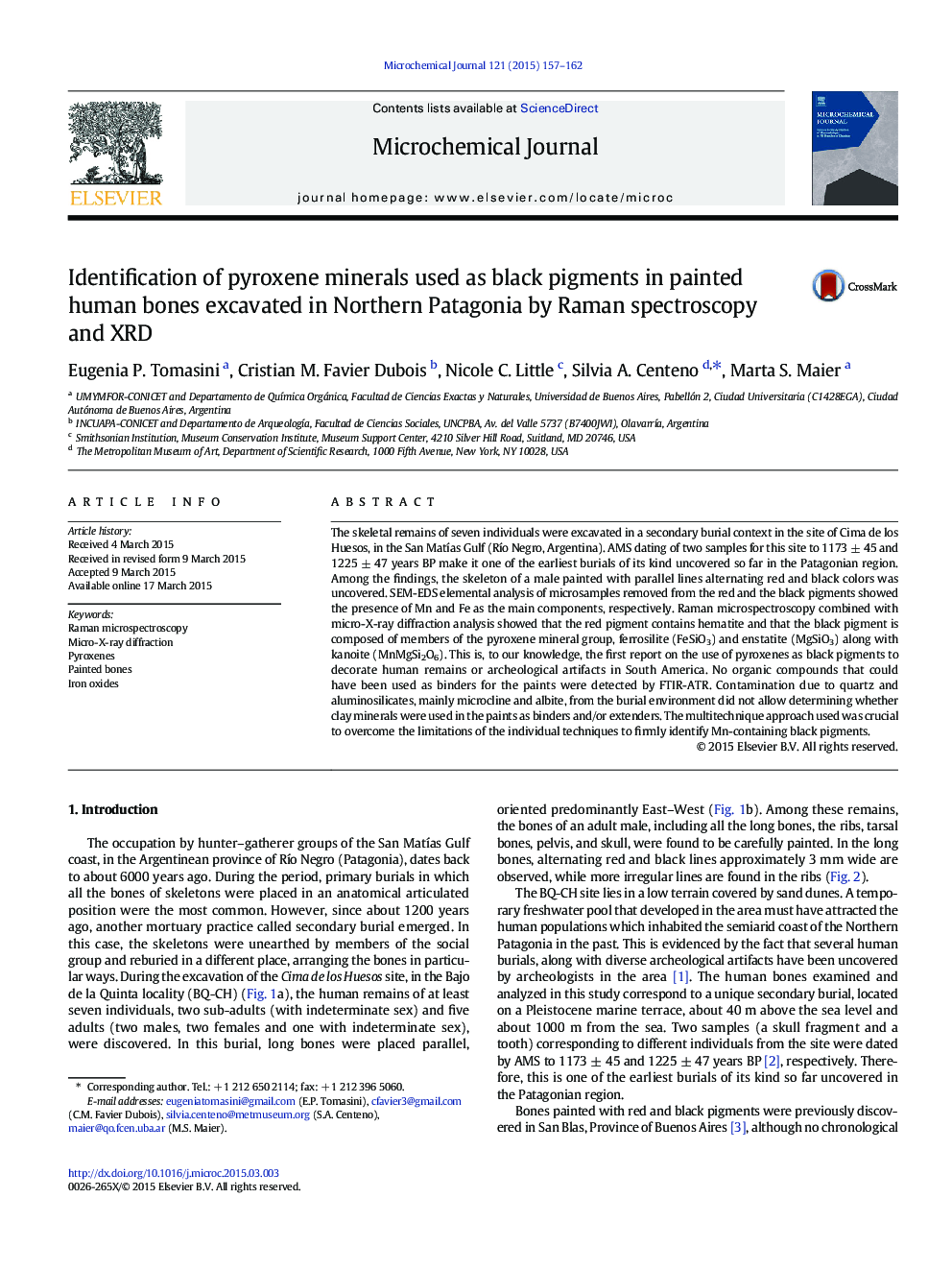| Article ID | Journal | Published Year | Pages | File Type |
|---|---|---|---|---|
| 1227690 | Microchemical Journal | 2015 | 6 Pages |
•Black pigments in microsamples of 1200-year old archeological painted bones•Pyroxenes ferrosilite, enstatite and kanoite identified by Raman, micro-XRD, EDS•Contamination from burial environment•Raman spectral references for non-invasive identification of pyroxenes pigments
The skeletal remains of seven individuals were excavated in a secondary burial context in the site of Cima de los Huesos, in the San Matías Gulf (Río Negro, Argentina). AMS dating of two samples for this site to 1173 ± 45 and 1225 ± 47 years BP make it one of the earliest burials of its kind uncovered so far in the Patagonian region. Among the findings, the skeleton of a male painted with parallel lines alternating red and black colors was uncovered. SEM-EDS elemental analysis of microsamples removed from the red and the black pigments showed the presence of Mn and Fe as the main components, respectively. Raman microspectroscopy combined with micro-X-ray diffraction analysis showed that the red pigment contains hematite and that the black pigment is composed of members of the pyroxene mineral group, ferrosilite (FeSiO3) and enstatite (MgSiO3) along with kanoite (MnMgSi2O6). This is, to our knowledge, the first report on the use of pyroxenes as black pigments to decorate human remains or archeological artifacts in South America. No organic compounds that could have been used as binders for the paints were detected by FTIR-ATR. Contamination due to quartz and aluminosilicates, mainly microcline and albite, from the burial environment did not allow determining whether clay minerals were used in the paints as binders and/or extenders. The multitechnique approach used was crucial to overcome the limitations of the individual techniques to firmly identify Mn-containing black pigments.
